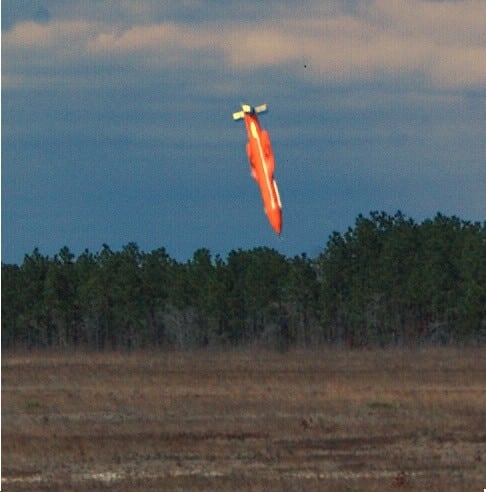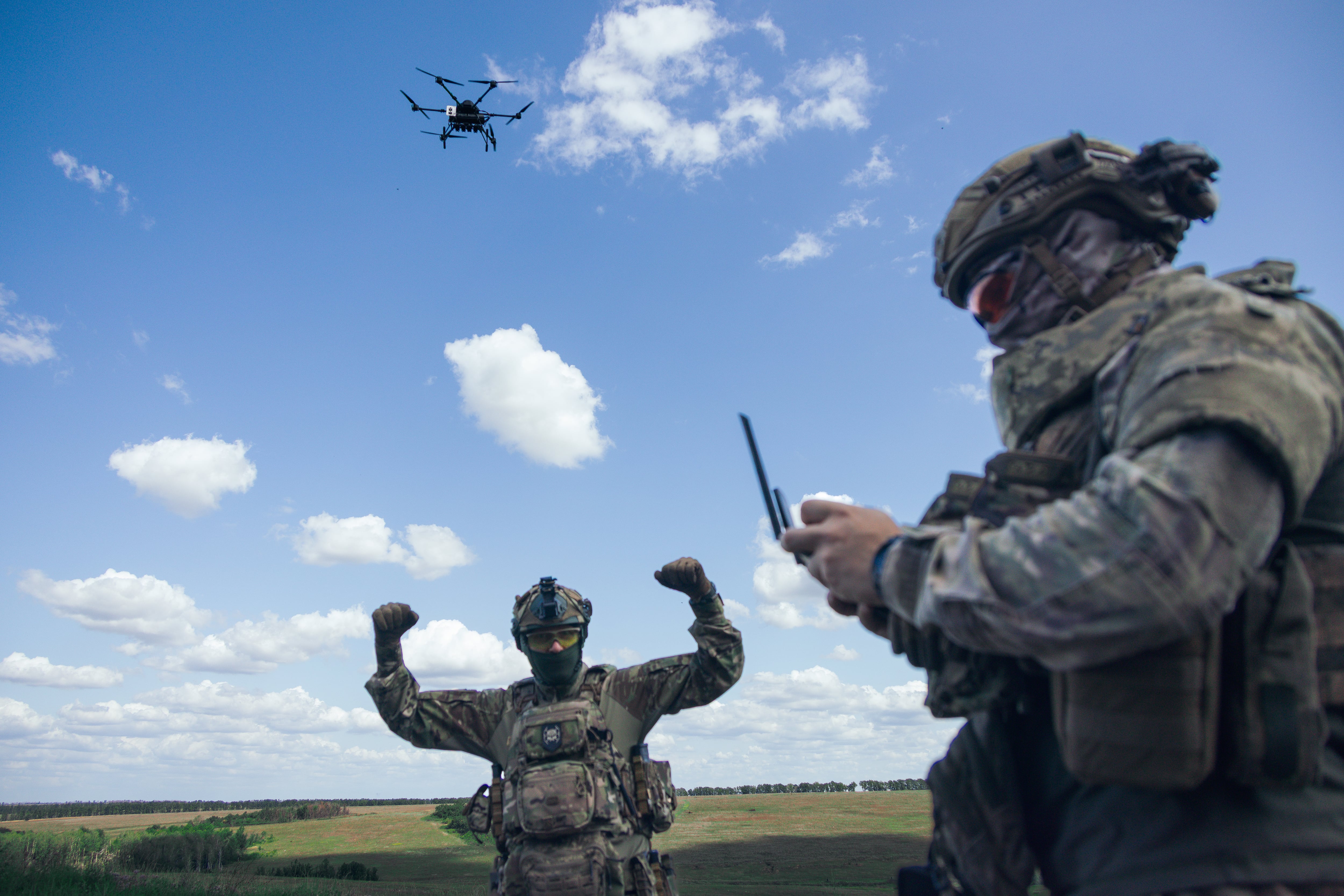The U.S. military said it conducted a strike on an ISIS-K tunnel complex in the Achin district of Nangarhar province, Afghanistan, on Thursday.
A U.S. aircraft dropped a GBU-43 Massive Ordnance Air Blast, also known as a MOAB, as part of ongoing efforts to defeat ISIS-Khorasan in Afghanistan, according to a statement from U.S. Central Command.
The strike aimed to minimize the risk to Afghan and U.S. forces conducting clearing operations in the area, the release said.
"As ISIS-K's losses have mounted, they are using IEDs, bunkers and tunnels to thicken their defense," Gen. John W. Nicholson, the top commander in Afghanistan, said in the release. "This is the right munition to reduce these obstacles and maintain the momentum of our offensive against ISIS-K."
The release said the U.S. took "every precaution" to avoid civilian casualties, a position White House spokesman Sean Spicer reiterated on Thursday.
"The United States takes the fight against ISIS very seriously and in order to defeat the group, we must deny them operational space, which we did," Spicer said. "The United States took all precautions necessary to prevent civilian casualties and collateral damage as a result of the operation."
Spicer also described the bomb as "a large, powerful and accurately delivered weapon."
When asked if he authorized the bomb's use during an event at the White House Thursday, Trump praised the military's performance and told reporters, "Everybody knows exactly what happened."
"What I do is authorize my military," Trump continued. "We have the greatest military in the world and they've done a job as usual. We have given them total authorization and that's what they're doing and, frankly, that's why they've been so successful lately."
When asked if the bombing sent a message to North Korea, Trump said, "I don't know if this sends a message, it doesn't make any difference if it does or not."
The strike comes just days after a Special Forces soldier was killed in Nangarhar province. Staff Sgt. Mark De Alencar, of 7th Special Forces Group, was killed Saturday by enemy small arms fire while his unit was conducting counter-ISIS operations, according to the Defense Department.
The fact that the U.S. dropped the MOAB in the same province where De Alencar was killed is probably not a coincidence, said Bill Roggio, of the Foundation for Defense of Democracies.
"There might have been a degree of payback here as well," Roggio told Military Times. "There's certainly nothing wrong with that, especially if you're killing your enemy."
ISIS has had a strong presence in Nangarhar and three other Afghan provinces for years, said Roggio, who also is the editor of the Long War Journal. The fact that the U.S. dropped the MOAB indicates that ISIS remains a threat in the area, he said. The weapon is also effective against enemy fighters who hide in caves.
"What it does is basically suck out all of the oxygen and lights the air on fire," Roggio said. "It’s a way to get into areas where conventional bombs can’t reach."
The use of the GBU-43/B should not be understood as a larger show of force meant to send a message to Syria or other nations, said Charles A. Horner, a retired 4-star Air Force general who commanded U.S. air assets during Desert Storm. Instead, it was likely employed because of its ability to destroy ISIS's underground infrastructure, he said.
"They were wanting to collapse tunnels, and they don't know exactly where the tunnel is so they want to cause an earthquake to cave them in," he said.

The GBU-43/B Massive Ordnance Air Blast bomb prototype moments before it makes contact March 11, 2003. The detonation created a mushroom cloud that could be seen from up to 20 miles away.
Photo Credit: Air Force
The 30-foot, 21,600-pound, GPS-guided MOAB was designed before the Iraq war to try to pressure Saddam Hussein, but none were ever used in the war. The first operational MOAB was deployed on April 11, 2003, but by that point, coalition troops had entered Baghdad and the Iraqi army had crumbled. According to an Air Force release published on the fifth anniversary of its March 11, 2003, test, it produced a mushroom cloud that could be seen from 20 miles away. It is so big, it doesn't fit into bombers and instead must be carried in the back of a C-130.
Footage of the March 2003 test available online shows a C-130 flying over a range at Eglin. A parachute pops out the back, catches the wind, and drags a platform carrying the MOAB from the airplane. The MOAB falls from the platform, pops out its directional fins, and detonates just above the ground with a deafening roar.
After the initial phase of the war passed without it being used, it became a museum piece and was added to the Air Armament Museum at Eglin Air Force Base in Florida in 2004. That MOAB on display was an empty shell, but the Air Force said at the time that it could be refilled with explosives and put back into service.
The massive U.S. attack comes as several regional powers, including Russia, China, Iran and Pakistan, have begun to exert more influence — in some cases to undermine NATO's objectives.
ISIS Khorasan is an affiliate of the group's core network in Syria and Iraq. It receives tactical advice and some financial support from outside Afghanistan, but U.S. officials have so far not observed an influx of fighters from either country. Speaking at the Pentagon in December, Nicholson estimated that his forces had killed about 500 ISIS fighters in Afghanistan throughout 2016, including 12 of the group's most senior leaders. Those losses accounted for about 25 to 30 percent of ISIS-K's total size, he said, and reduced its foothold in Afghanistan from nine districts to three.
On Wednesday, the White House announced it is conducting a broader strategy review intended to establish the United States' next steps for the 15-year Afghanistan campaign. As part of that, the president intends to dispatch his national security adviser, Army Lt. Gen. H.R. McMaster, to "find out how we can make progress alongside our Afghan partners."
This story is developing. Check back for updates.
Reporters Stephen Losey, Andrew deGrandpre and Valerie Insinna contributed to this report.
Charlsy is a Reporter and Engagement Manager for Military Times. Email her at cpanzino@militarytimes.com.





